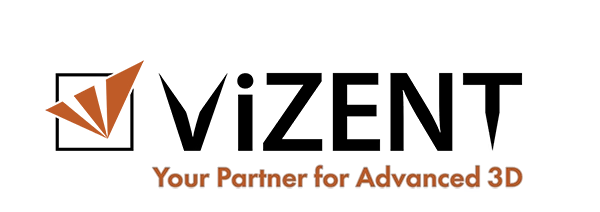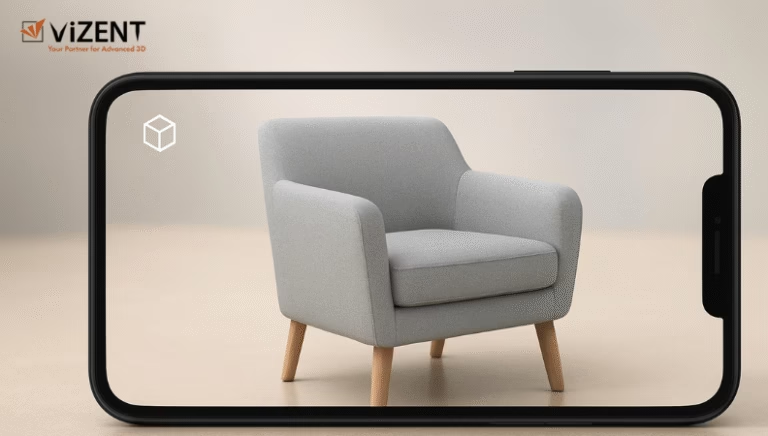5 Game-Changing AR Modeling Trends for the Next Era of E-Commerce
The rise of e-commerce with 3D and AR product modeling has redefined how customers engage with products digitally. From virtually trying on items to seeing 3D product visualization AR models that look like the product, the in-store retail experience is being transformed through digital technology. In 2025, augmented reality combined with AI and 3D modeling will take over e-commerce, providing hyper-realistic, immersive experiences that translate to higher conversion rates and lower return rates. Let’s look into the top augmented reality product modeling trends that affect this shift:
1. Real-Time Rendering Revolutionizing in 3D Product Visualization AR
Real-time rendering has improved realism in augmented reality and 3D visualization. With PBR (Physically Based Rendering) materials, retailers are able to synthetically produce realistic textures and lighting effects that emulate environmental conditions. This trend also builds buyer confidence with the ability to
- A photo-realistic visualization of the product through AR.
- Boost customer engagement and time spent viewing the product.
- Lower product return rates with more accurate visualization.
2. AI-Powered Automation in Augmented Reality Product Modeling Trends
Artificial Intelligence is completely transforming 3D modeling processes by creating 3D models quickly from images or CAD data. It allows brands with extensive catalogs to visualize 3D product collections in augmented reality more efficiently while also speeding up the process and maintaining high quality.
- AI is transforming 2D images into 3D models.
- Reduces modeling time and costs in production.
- Helps speed the time to market for new products.
3. Virtual Try-On Experiences through 3D Model in E-Commerce
The use of AR try-on solutions has become a major trend in the fashion and beauty industry, and these technologies create the next best experience to replicate physical shopping. They enabled simulation of how the product would be confronted in real life to increase purchase confidence and conversions.
- Provides a realistic way to try on fashion and cosmetics.
- Creates more confidence in purchase and reduces return rates.
- Increases personalization when online shopping.
4. Cross-Platform Integration of AR and 3D Modeling in E-Commerce Experience
Seamless AR and 3D experiences across multiple platforms, websites, apps, and social media are now essential. Brands are reusing optimized 3D assets to provide consistent visualization across all devices, creating unified experiences that enhance brand reliability and engagement.
- Ensures compatibility across mobile, web, and wearables.
- Optimizes 3D assets for lightweight, fast loading.
- Delivers consistent brand experience across platforms.
5. Measurable Impact of AR and 3D Modeling on Business Metrics
Brands now measure the tangible ROI of 3D product visualization AR by tracking conversions, engagement, and return rates. Businesses that adopt AR and 3D modeling in e-commerce experience higher sales, lower returns, and stronger customer trust due to transparent, realistic product previews.
- Tracks engagement and purchase intent.
- Links AR usage with conversion rate improvements.
- Enhances brand credibility and transparency.
AI-Driven 3D Asset Pipelines Streamline E-Commerce Production
AI automates asset generation, drastically cutting production costs and time. Retailers can now generate thousands of AR-ready models in weeks instead of months, allowing them to expand their online catalogs efficiently while maintaining consistent visual quality across all SKUs.
Personalized AR Shopping Boosts Buyer Confidence
Customers can customize and visualize products in their real environments. Whether it’s furniture placement or makeup shade testing, personalization strengthens buyer confidence and influences purchase decisions positively.
AR Integration with E-Commerce Platforms
Social media platforms now integrate AR filters and try-on options that utilize 3D product visualization AR models.
Data-Driven Insights Enhance AR Campaign Optimization
E-commerce brands use analytics tools to track customer interactions with AR content. Metrics like dwell time, rotation, and view-to-purchase ratio help businesses refine their AR strategies for maximum ROI and better customer engagement.
Conclusion
The integration of AI, AR, and 3D modeling marks a transformative milestone for the e-commerce industry. By adopting 3D and AR product modeling technologies, brands can deliver hyper-realistic product visualization, offer personalized virtual try-on experiences, and achieve measurable ROI through enhanced customer engagement and reduced returns. As we move through 2025, these technologies are no longer optional trends; they have become essential tools for staying competitive in the digital retail landscape.


